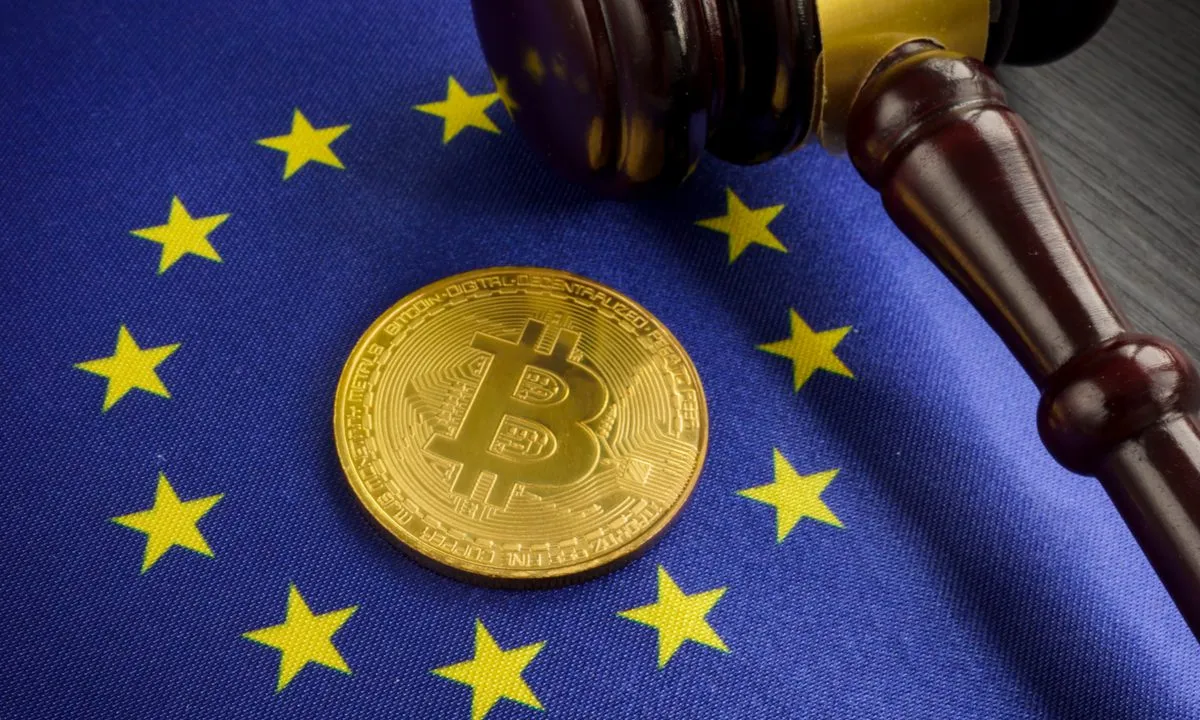|
Getting your Trinity Audio player ready...
|
The European Union (EU) has taken a bold step towards regulating the cryptocurrency industry with the introduction of the Markets in Crypto-Assets (MiCA) Regulation. This groundbreaking legislation aims to establish a transparent and secure environment for investors within the Eurozone, marking a significant milestone in the global crypto regulatory landscape.
What is MiCA?
MiCA is the first-ever comprehensive legal framework governing crypto-assets in the EU. Building upon existing regulations for traditional financial instruments, it seeks to provide legal clarity and oversight for cryptocurrencies, stablecoins, and other digital assets.
The European Parliament adopted MiCA to regulate the issuance of crypto-assets and the provision of crypto-related services within member states. This ambitious regulatory framework aims to achieve three key objectives:
- Foster innovation: MiCA seeks to create an environment that encourages responsible innovation within the crypto space.
- Mitigate risks: By establishing robust regulations, MiCA aims to minimize the risks associated with crypto-assets, promoting financial stability and investor protection.
- Ensure transparency: MiCA mandates increased transparency from crypto service providers and issuers, fostering trust and confidence within the market.
What Does MiCA Entail?
The scope of MiCA regulations extends to a wide range of crypto-related activities and entities. These include:
- Crypto-asset service providers (CASPs): Exchanges, trading platforms, custodial wallets, and advisory/management firms all fall under the purview of MiCA.
- Crypto-asset issuers: Companies launching and managing cryptocurrencies or tokens must comply with MiCA’s regulations.
Distinct Categories of Crypto-Assets
MiCA defines crypto-assets based on their underlying technology and function. The regulations differentiate between three main categories:
- Asset-referenced tokens (ARTs): These tokens derive their value from external assets like gold or fiat currencies.
- E-money tokens (EMTs): Functioning similarly to electronic money, EMTs are pegged to a fiat currency and intended for use as a medium of exchange.
- Utility tokens: These tokens provide access to specific goods or services within a blockchain network.
Stricter Rules for Stablecoins
Recognizing the potential risks associated with stablecoins, MiCA imposes stricter regulations on these assets. It mandates issuers to implement robust stabilization mechanisms and ensure adequate backing by highly liquid assets, bolstering user confidence in the stability of these tokens.
Regulations for CASPs and Issuers
MiCA outlines specific regulations for both CASPs and issuers within the EU:
- CASP Regulations:
- Licensing: CASPs must obtain authorization and a special license from a designated national financial regulator within the EU to operate legally.
- Consumer Protection: Strict organizational requirements safeguard investor funds and uphold the integrity of the financial system.
- Market Abuse Prevention: CASPs must have systems in place to detect and prevent market abuse by their clients.
- Transparency: Service providers are obligated to maintain comprehensive records, publish transparent pricing policies, and provide clear communication regarding their products and services, including risk warnings.
- Anti-Money Laundering (AML) and Know Your Customer (KYC): To combat financial crime, MiCA mandates CASPs to implement KYC procedures and only list crypto-assets with readily available whitepapers. Additionally, they must reject anonymous tokens that obscure transaction histories.
- Issuer Regulations:
- Legal Entity Registration: Issuers must register as legal entities within an EU member state, ensuring accountability in case of fraud or misrepresentation.
- Whitepapers: Issuers are required to produce whitepapers outlining crucial marketing information for their EMTs or ARTs. Exemptions exist for small projects, free distributions, offerings solely to qualified investors, and reward tokens.
Also Read: EU Crypto Crackdown: KYC Goes Mandatory for Exchanges, But Self-Custody Wallets Breathe Easy
Why Was MiCA Implemented?
The impetus for MiCA arose from a 2019 report by the European Banking Authority (EBA). This report highlighted the inadequacy of existing EU regulations to address the evolving crypto landscape. Furthermore, it underscored the need for:
- Harmonized Regulations: MiCA replaces the fragmented regulatory landscape across member states with a unified framework.
- Consumer Protection: The legislation aims to establish safeguards against misleading practices and enhance investor protection within the crypto industry.
- Financial Stability: MiCA extends the scope of financial regulations to crypto-assets and oversees crypto-related services to combat money laundering.
- Transparency and Innovation: MiCA promotes transparency in crypto markets while fostering innovation within the industry.
- Environmental Considerations: The regulations also acknowledge the potential environmental impact of crypto-assets and aim to mitigate any negative consequences.
Impact on Crypto Users in Europe
- Enhanced Trust and Legitimacy: A comprehensive legal framework fosters trust in the crypto industry, attracting new investors and legitimizing crypto as a viable asset class.
- Investor Protection: MiCA’s focus on transparency and consumer protection empowers investors with the information needed to make informed decisions and safeguard their assets.
- Standardized Rules: MiCA eliminates the regulatory confusion that previously existed across member states, creating a level playing field for crypto businesses operating within the Eurozone.
- Passporting Rights: CASPs with a MiCA license can operate freely throughout the EU, streamlining cross-border business activities.
- Potential for Growth: MiCA’s focus on fostering innovation can lead to the development of new and exciting crypto projects within the EU.
Negative Impacts (and Areas for Improvement):
- Regulatory Uncertainty: Grey areas remain regarding the classification of certain assets like NFTs and the implementation of MiCA for overseas companies.
- Privacy Concerns: The KYC requirements for CASPs raise concerns about user privacy within the crypto space.
- Potential for Bureaucracy: The licensing and registration processes could become overly complex and bureaucratic, hindering innovation and market entry for smaller players.
The Bottom Line
The EU’s MiCA regulations represent a significant step towards establishing a robust and secure framework for the crypto industry within Europe. MiCA provides much-needed legal certainty for investors and businesses, fostering trust and confidence in the market.
While some regulatory ambiguity remains, MiCA serves as a valuable blueprint for other countries seeking to navigate the ever-evolving world of cryptocurrencies. As the regulations are implemented and refined, the EU’s MiCA is likely to shape the future of the crypto landscape not just in Europe but potentially on a global scale.




